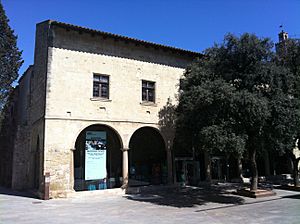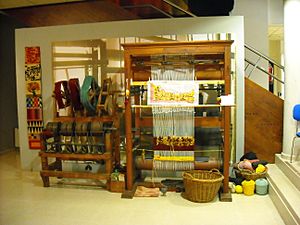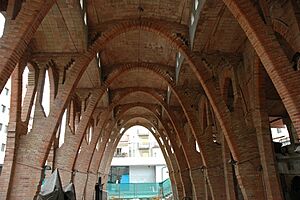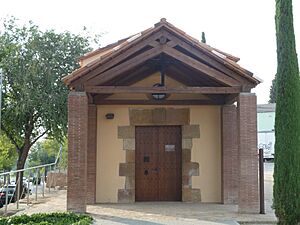Sant Cugat Museum facts for kids
The Sant Cugat Museum (Catalan: Museu de Sant Cugat, Spanish: Museo de Sant Cugat) opened its doors on April 23, 2003. Its main job is to look after and share the history, art, and culture of Sant Cugat del Vallès in Catalonia. The museum is part of the Barcelona Provincial Council Local Museum Network, which connects many local museums.
The Sant Cugat Museum has two main locations: the Monastery of Sant Cugat and Casa Aymat. It also includes two other special buildings: the Celler Modernista and the Chapel of Sant Domenec. All these places have areas for temporary art and history exhibits. The museum also works to remember the town's past. It often organizes walks to help people discover local history and heritage.
Contents
Museum Locations
Sant Cugat Monastery: Main Headquarters

The Monastery of Sant Cugat was built a long time ago, between the 800s and the 1300s. Today, it is the main home of the Sant Cugat Museum. When you visit, you can explore the cloister (a covered walkway) and the church. There are also special rooms around the cloister. These rooms have been turned into a learning center about medieval monasteries.
The museum's permanent exhibit explains how monastery buildings were designed. It shows how the beautiful stone carvings, called Romanesque capitals, were made. You can also learn about the rules that monks followed, known as The Rule of Saint Benedict. The exhibit also tells the story of how the Sant Cugat Monastery changed over time. It started in the 800s and stopped being a monastery in 1835.
Casa Aymat: Tapestry Art
Casa Aymat is another important part of the Sant Cugat Museum. It was built in 1926 by Tomàs Aymat. Back then, it was a factory where rugs and tapestries were made. Later, it became the main place for the Catalan Tapestry School.
Now, Casa Aymat is home to the Contemporary Tapestry Museum. It shows how tapestry art started and how it developed into a style called Noucentisme. You can see works by Tomàs Aymat and other famous artists. One of the most well-known students from the Catalan Tapestry School was Josep Grau-Garriga. The exhibition also features tapestries by artists like Subirachs, Ràfols-Casamada, Guinovart, and Hernàndez Pijuan.
Other Museum Buildings to Explore
Celler Modernista: A Historic Wine Cellar
The Celler Modernista is what remains of an old cooperative wine press. It was started in 1921. The building was designed by Cesar Martinell. He was an architect who was very good at designing farm buildings. His designs were inspired by Gaudi's art nouveau style and a simple, clear design style from the early 1900s.
Making wine became less popular after the 1950s. The last time wine was made there was in 1988. Many of the buildings around it were taken down. In 1994, even the hall where the wine vats were kept was removed to make space for new city buildings. The part that is left now is used for exhibitions. You can visit it on certain days, especially on weekends.
Chapel of Sant Domenec: A Small, Historic Chapel
The Chapel of Sant Domenec is a small chapel. It is located on a road that connects two old monasteries: Sant Cugat and Sant Llorenç del Munt. This road goes through towns like Sant Cugat, Sant Quirze, Terrassa, and Matadepera.
Inside the chapel, there are exhibitions about the Monks' Path. You can also learn about the Battle of Sant Cugat, which happened during a big war called the Peninsular War. However, this chapel is not open very often.
See also
 In Spanish: Museo de Sant Cugat para niños
In Spanish: Museo de Sant Cugat para niños




